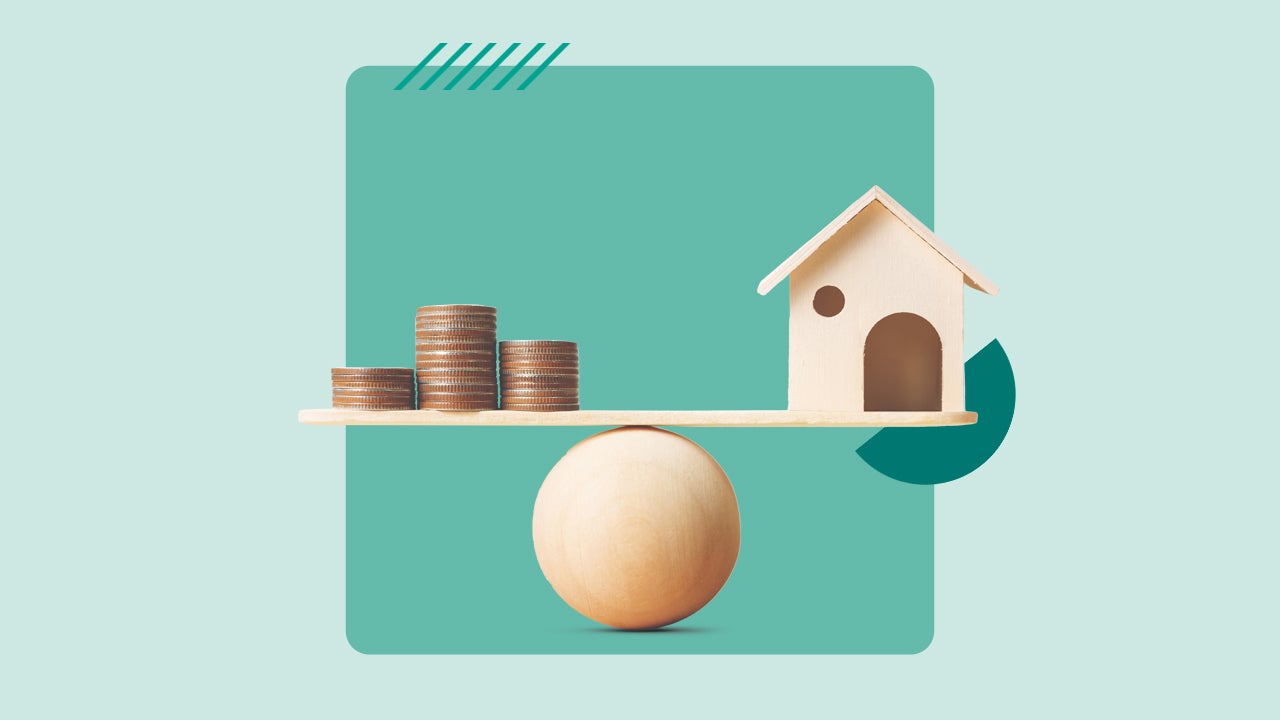APR vs. interest rate: What’s the difference?

Key takeaways
- The interest rate on a mortgage indicates how much interest you’ll pay for the amount you borrow. The annual percentage rate (APR) is the interest rate plus additional fees and any points.
- Interest rates are influenced by factors such as your credit score, the lender you work with, inflation and the broader economy.
- When comparing loan offers, it’s best to compare APRs to get a fuller picture of the true cost of the financing.
When shopping for a mortgage, it can be difficult to know how to make a true apples-to-apples comparison. Understanding the distinction between a loan’s interest rate and annual percentage rate (APR) can make you a more savvy mortgage shopper — and potentially save you some money along the way.
Difference between APR and interest rate
Interest rate vs. APR
- Interest rate
-
The price you pay to borrow money for a mortgage, expressed in the form of a percentage of the loan principal. The interest rate doesn’t reflect any other costs or fees paid in association with the loan and is impacted by Federal Reserve funds rate policies.
- APR
-
A percentage that indicates the total yearly cost of your loan; it includes your interest rate, as well as the other fees, like origination fees. The APR more accurately reflects the overall cost of a mortgage.
Expressed as a percentage, both the annual percentage rate (APR) and interest rate on a mortgage provide benchmarks for you to compare different loans and their costs. The key difference is that the interest rate is always going to be lower than the APR.
Consider a 30-year fixed-rate mortgage for $300,000 at 7 percent interest, with a 1 percent origination fee ($3,000) and one mortgage point (another $3,000) for a total of $6,000 in fees. That extra cost makes the APR 7.197 percent.
The Truth in Lending Act (TILA) requires mortgage lenders to disclose a loan’s APR, as well as its interest rate, to borrowers. This information is included in the loan estimate and the closing disclosure, which includes the loan’s final costs and terms. However, lenders might not include all fees in the APR; they’re not required to include certain costs such as credit reporting and appraisal fees. Ask your lender what’s included in the APR when comparing offers.
What is an interest rate?
The interest rate attached to a mortgage is a reflection of the cost you’ll pay to finance the home. Let’s say you borrow a $340,000, 30-year fixed-rate mortgage with an interest rate of 7 percent. At that rate over three decades, you’d pay $474,330 in interest, on top of the $340,000 of the loan itself.
While this sounds like a lot, in this example, you’ll pay the same mortgage payment each month, with a portion of each payment going to the $340,000 you borrowed — the loan principal — and another portion going to interest. At the beginning of your loan, you’ll pay less toward the principal and more toward interest. As your mortgage amortizes, your payments gradually start to cover more principal and less interest, although the rate itself does not change.
How are interest rates calculated?
Interest rates are partially determined by factors that are completely out of your control, such as inflation, the state of the broader economy and the lender you choose to work with. Because of these factors, mortgage rates are constantly changing. Every time rates move up or down, it impacts how much home you can afford.
Your specific mortgage rate is based on your credit history and score, your debt-to-income (DTI) ratio, your down payment size and other financial data. In general, the higher your credit score, the lower your interest rate will be.
How to get a lower interest rate
Getting a lower interest rate creates short-term savings by lowering your monthly payment, but you’ll also save money over the life of the loan. Here are some tips that can help you get a lower interest rate:
- Buy mortgage points
- Improve your credit score
- Make a bigger down payment
- Pay down or eliminate high-interest debt (which improves your debt-to-income ratio)
- Get a first-time homebuyer loan (provided you qualify)
What is an APR?
APR stands for annual percentage rate. It represents the cost of your mortgage and includes the interest rate and some other fees, such as:
- Closing costs
- Origination fee
- Mortgage points
- Mortgage broker fee, if any
How is APR calculated?
Determining the APR for a mortgage involves three key figures: the interest rate, fees and any points you choose to pay upfront. You can use Bankrate’s APR calculator to get a sense of how different fees and points can impact your overall loan cost.
Mortgage interest rate vs. APR examples
Here are examples comparing APR vs. interest rate for a $300,000, 30-year fixed-rate mortgage:
| Interest rate | 6.8% | 6.95% | 7% |
|---|---|---|---|
| Origination fee | 1% ($3,000) | 1% ($3,000) | 1% ($3,000) |
| Discount points | 2 ($6,000) | 1 ($3,000) | 0 |
| Points and fees | $9,000 | $6,000 | $3,000 |
| APR | 7.092% | 7.147% | 7.099% |
| Monthly payment(principal and interest) | $1,956 | $1,986 | $1,996 |
| Total interest | $404,075 | $414,907 | $418,524 |
Tips to compare interest rate vs. APR
- APR gives you a better idea of the real cost of the loan. Because APR includes fees, you’ll have a better idea of how much you’ll actually pay when you compare APRs.
- Shop around for loan offers before choosing a lender. Some lenders might advertise a low interest rate, but charge higher upfront fees. Others might charge more interest, but don’t impose fees. Taking the time to review mortgage lenders and compare offers could save you money over the life of your mortgage.
- Be careful comparing fixed mortgage and ARM rates. The rate quoted for an ARM is the introductory rate, which is only fixed for a set period. That means, after that period, the rate could go up, and so will your payment. Fixed-rate mortgages keep the same rate, so your principal and interest payment will stay the same every month.
- The APR on an ARM doesn’t reflect the maximum interest rate for the loan. After the introductory rate ends, your rate could adjust up significantly, depending on the market and the rate caps on your ARM.
FAQ
Why we ask for feedback Your feedback helps us improve our content and services. It takes less than a minute to complete.
Your responses are anonymous and will only be used for improving our website.









